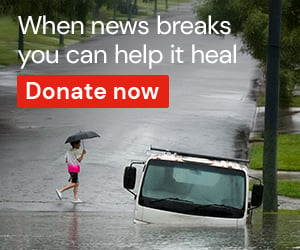Heatstroke and heat exhaustion
Heatwaves and hot weather can kill. Learn about the signs, symptoms and treatment of heatstroke and heat exhaustion so you can help yourself and others when the temperature soars.

Heatwaves can kill, so learn how to stay cool in hot weather and watch for the signs and symptoms of heat exhaustion and heat stroke. Here's what to look for and what you can do to help. Note that risk of heat related illness can increase with young children and elderly, pregnancy and those taking certain medications. Here's what to look for and what you can do to help.
What is heat exhaustion?
Heat exhaustion happens when someone becomes dehydrated due to fluid loss from a hot environment and/or excessive physical activity.
The symptoms of heat exhaustion include:
- normal or mildly higher body temperature
- cool, pale, clammy skin
- excessive sweating
- thirsty
- headache
- muscle cramps
- rapid, weak pulse
- fainting or dizziness.
Treatment
- Help the person to lie down in a cool or shady area to monitor.
- Remove excessive clothing and loosen any tight clothing.
- Immerse hands and feet in cold water, cool by fanning and moisten the skin, if possible.
- If fully alert and responsive, give them frequent small drinks of water.
- If muscle cramps occur, gently stretch the affected muscles to ease pain.
What is heatstroke?
Heatstroke is a life-threatening emergency and can cause a person to collapse or fall unconscious. Heatstroke is more serious and means the body is no longer able to regulate its temperature by cooling the skin's surface by sweating. The internal body temperature rises, and organ damage can occur.
The symptoms of heatstroke include:
- reduced sweating
- high body temperature (above 40°C)
- dry, flushed, hot skin
- nausea
- muscle spasms
- pain throughout the body
- unusual behaviour or signs of confusion
- seizure or possible loss of responsiveness.
Treatment
- Immediately call 000 for an ambulance.
- If available, have the person take a cold shower or bath.
- Cool the person with household items such as wet towels, fans or icepacks placed in the neck, groin and armpits.
- If unresponsive or not alert, place in the recovery position.
- Prepare to give CPR if necessary.
For more information, download the Red Cross First Aid App.
Are you ready?
There are simple and practical steps you can take to protect yourself, the people you love, and the things you value most. Do one simple thing to make you safer.
Charity donations of $2 or more to Australian Red Cross may be tax deductible in Australia. Site protected by Google Invisible reCAPTCHA. © Australian Red Cross 2025. ABN 50 169 561 394


